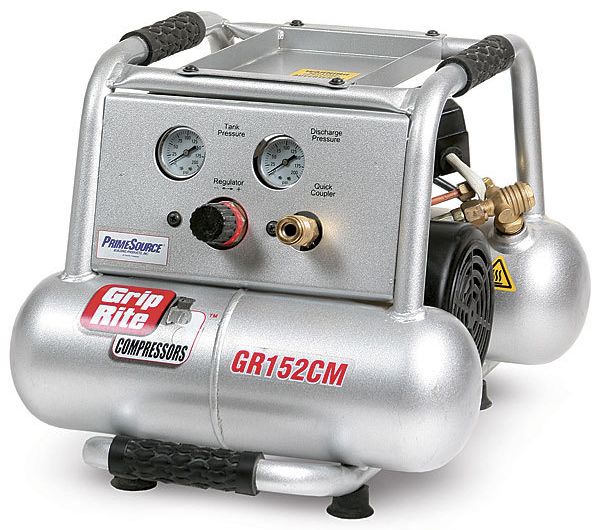Tool Test: Compact Compressors
Small, quiet, and lightweight, these air compressors handle a bit of everything.

Synopsis: Many builders are supplementing their full-size compressors with compact models designed to handle small trim jobs, punch-list work, and light framing. For this tool-test article, Paul Johnson, a remodeler in Portland, Ore., put 14 compact compressors to work. Along with his review of the top eight contenders, the article includes a list of three features Johnson considers especially important when choosing a compressor: shots fired (Johnson’s test included 18-ga. brad nails, 15-ga. finish nails, and framing nails), recovery speed, and noise levels. He also describes seven specs that buyers must understand before making an informed purchase: price, weight, capacity, horsepower, output, draw, and lubrication. For each of the top eight compressors, Johnson lists its specs, features, and flaws, then provides a “bottom line” assessment. Johnson’s pick for best overall compressor is the Grip-Rite GR152CM; his choice for best value is the Senco PC1010.
When you’re standing at the front door looking up a three-story staircase leading to a small bathroom remodel, there’s no better feeling than knowing that you won’t have to lug a 75-lb. twin-stack air compressor up and down every day. Many builders are supplementing their large compressors with compact models designed for small trim jobs, punch-list work, and even light framing.
I cycled through 14 compressors — each 2 gal. or less — and picked the eight best for those times when you don’t want to bring in the big guns. The timing couldn’t have been better, either. I had just begun trimming out a new house as well as working on a kitchen and master-bath remodel. Between these jobs, I had plenty of chances to load and unload compressors, move them around sites, and use a variety of air tools from framing to finish.
The challenge in picking out the best small compressor is that every user has a different idea of what features are most important. Some favor light weight and a low noise level over tank capacity and output. Others want compressors that have high volume and output and that are still portable. I focused on a healthy mix of compactness, portability, quietness, and output. In the end, I chose the best compressors based on how I use them as a remodelling contractor. Your mileage will vary, though, so it’s important to understand the basic specs and criteria of a compressor before looking at the descriptions and specifications for each model.
My pick for best value was a no-brainer: The Senco model achieves a time-tested balance between cost and quality. The pick for best overall was much harder and came close to a three-way tie. In the end, though, I found that the larger Grip-Rite model had the most features that I consider desirable for everyday use.
Shots fired
To test the compressors, I used the three nailers most common in my day-to-day operation: an 18-ga. brad nailer, a 15-ga. angled finish nailer, and a framing nailer. To maintain consistency, I didn’t change nail sizes during my tests, and I set each compressor at 100-psi output.
Recovery speed
Recovery speed is the amount of time it takes for a compressor to refill to 100 psi. If the tank refills slowly, then you have to put up with the noise of the motor and the risk of production coming to a halt while you wait for the compressor to catch up. Because some of the compressors are rated for only half-duty or less, the more the motor runs, the greater chance it has of burning out with overuse.
For more photos and details, click the View PDF button below:


























